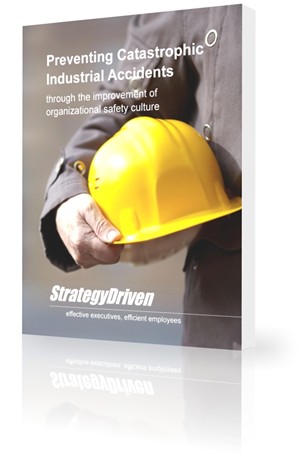The Big Picture of Business: Fine Wine, Aged Cheese and Valuable Antiques. Professionals Who Go the Distance.
A professional’s career and their collected Body of Work encompass time, energy, resources, perseverance and lots of commitment in order to produce. This holds true for any company, institution and for any person.
There are three key ingredients in developing deep leadership roots. Long-term success for the company and a healthy career for the individual are attributable to:
- The manner in which an organization or professional lives and conducts business on a daily basis. I symbolize this with the analogy Fine Wine.
- The evolution, education, enrichment, professional development, training and life experiences that one amasses. This continuum is symbolized by the analogy Aged Cheese.
- What of value is really accomplished and left behind. This shows that the business or person actually existed and contributed meaningfully to society, rather than just filling time and space on this earth. This is symbolized by the analogy Valuable Antiques.
Wine.
Just because it is a bottled alcoholic beverage doesn’t mean that it contains great wine. In the marketplace, there exist large quantities of fair wine, some bad wine and some good wine. There’s very little great wine.
Defining what is ‘good’ is a matter of judgment, perspective and prejudice. When one assigns the term ‘great,’ then the wine (used as an analogy for one’s daily process of living and working) takes on rare proportions.
The general public is not exposed to the wine vineyard process and, thus, is not familiar with the characteristics of that special reserve:
- A good crop of grapes from which to draw.
- Skilled processes in picking and processing the grapes.
- Knowledge in the making of wine.
- Care for the industry, the product and the process (a defined Vision).
- Skilled technicians, who transfer the intent of the wine maker into the bottle.
- Packaging, distribution and marketing of the product.
- Reputation of the winery, steadily built and carefully preserved.
- An informed clientele, with the ability to appreciate and enjoy the wine.
- The right settings in which to showcase the product.
- A body of pleasurable and memorable experiences from which customers will build brand loyalty.
- A reinforced manufacturing process that assures consistency in all areas.
- Stated, refined strategies for the winery to remain in business, producing a quality product and maintaining clientele appreciation.
Cheese.
We all eat and enjoy cheese, in some form. If it’s a brand or flavor we recognize, we think it’s good. When cheese is part of a favorite recipe, then it’s an essential ingredient, though we might not eat it by itself.
The process of creating and curing the cheese (used as an analogy for the process of sharpening and amassing life and professional skills) is both an art and a science.
When it comes to cheese, people generally uphold these constants:
- Cheese is made from milk.
- It is manufactured in various places, utilizing various processes.
- Some sources of cheese making (Switzerland, Wisconsin) are acknowledged for their expertise.
- Cheese is wrapped and packaged in various forms: sliced, chunks, rounds, barrels.
- It comes from packages that are neatly wrapped and arranged for eye appeal in a clean, well-lit and suitably refrigerated dairy case.
- The flavor of cheese we buy depends upon the use we have for it… be it as an appetizer, as an ingredient in an ensemble dish, as a salad enhancer or just to munch on.
- Most often, we mix the cheese with something else.
- Various styles of cheese are often served at a time, or mixed into recipes.
- If it tastes good, we consume it again. If not, we will not likely give that flavor or brand another try.
- If guests like it, we will serve it again. If not, their preferences will influence ours, and, thus, the cheese will not reappear.
- If it is really good, we refer it to others… sometimes giving it as a gift.
- The better it appears to be (marketing, wrapping, price, place of purchase) affects our viewpoint on its quality.
- It is often served with wine, sometimes on antique trays or dishes.
Antiques.
Antiques are rare, interesting, fanciful and out of the ordinary. They tend to stimulate affection, admiration and appreciation. They are generally thought of as joyful, artistic and quality-reflecting possessions which are in rare supply.
Everyone owns and buys possessions, including clothing, equipment, furniture and household items. A small percentage of the public views unique versions of these same items as antiques, creating a preferred place for them in their lives.
Antiques are perceived in different manners. The substance of antiques (used as an analogy for what one does-accomplishes with his-her life and organization) is that of the creator, not the seller or the collector.
Among the truisms of antiques are:
- Their quality and workmanship is set by the creator, with inspiration from diverse sources.
- Their market value is set by the seller, who often is an appreciator or, at the least, has a profit motive.
- Their purchase price is set by the buyer, who also believes that getting a bargain enhances the value of the antique.
- The collector appreciates collectibles as a whole and their own specialties in particular. The collector appreciates those who appreciate.
- As one attaches value to the unique, one finds value in other things around them. Appreciation for value becomes a quality of life ingredient.
- Definitions of antiques vary from collector to collector, depending upon interest. To one, it may be a rare painting. To another, it is custom-made furniture. To still another, it may be a Roy Rogers wristwatch, one of Elvis Presley’s scarves or a Partridge Family lunchbox.
- Seeking out new and unique places to find antiques is great fun, and one seeks to include friends in the quest.
- The hunt is worth as much or more than the actual find.
- As friends take up sub-specialties in collecting and preserving, we support their passions and interests.
- Once one gets acclimated toward antiques, one does not ‘go back.’ As an interest, it becomes a ‘way of life.’
- The nature of value continually changes and evolves.
Nourishing a Body of Work (Antique).
No company or individual sets out to create an antique (lifelong Body of Work). It just works out that way, depending upon such factors as:
- The crafting artist, as a person and a professional.
- The arsenal of tools which the creator has at hand.
- Combinations of experiences, training and assimilation which were gleaned by the artist.
- Unexpected twists, turns and situations which the craftor saw and seized upon.
- Vision for the project, from concept through execution.
- Sets of standards, with mediocrity not a rung on the ladder.
- An innate sense of perspective, with the reality that no such thing as perfection exists.
- Marketplace sensitive considered in the overall project, but not pandored to.
- Applications for the concept and durability of the product for the long-run.
The phenomena of people liking and admiring antiques, years after their creation, is like a successful wine and cheese party. But, this isn’t why the wine and cheese were made. There are many forces and outside influences who set standards for quality. Normally, it’s the marketplace. Who should be the arbitrator and benchmark? You should. Your company will. Your family must.
7 Plateaus of Professionalism:
- Learning and Growing. Develop resources, skills and talents.
- Early Accomplishments. Learn what works and why. Incorporate your own successes into the organization’s portfolio of achievements.
- Observe Lack of Professionalism in Others. Commit to sets of standards as to role, job, responsibilities, relationships. Take stands against mediocrity, sloppiness, poor work and low quality. Learn about the culture and mission of organizations.
- Commitment to Career. Learn what constitutes excellence, and pursue it for the long-term. Enjoy well earned successes, sharing professional techniques with others.
- Seasoning. Refining career with several levels of achievement, honors, recognition. Learn about planning, tactics, organizational development, systems improvement. Active decision maker, able to take risks.
- Mentor-Leader-Advocate-Motivator. Finely develop skills in every aspect of the organization, beyond the scope of professional training. Amplify upon philosophies of others. Mentoring, creating and leading have become the primary emphasis for your career.
- Beyond the Level of Professional. Never stop paying dues, learning and growing professionally. Develop and share own philosophies. Long-term track record, unlike anything accomplished by any other individual… all contributing toward organizational philosophy, purpose, vision, quality of life, ethics, long-term growth.
Criteria for Assessing and Nurturing Professionalism.
Fine Wine
Core Values: Ethics. Professionalism, Quality.
Work with Colleagues: People Skills, Executive-Leadership Abilities, Collaborative Team Experience, References.
Aged Cheese
Expertise: Talents, Skills, Education and Training, Resume, Industries Served.
Business: Marketplace Understanding, Business Savvy.
Valuable Antiques
Track Record: Experience, Accomplishments, Case Studies, Professional Reputation.
Body of Knowledge: Original Ideas, Concepts, Self-Created Expertise.
Vision: Uniqueness, Creativity, Value-Added Contributions, Substance.
Characteristics of a Top Professional:
- Understands that careers evolve.
- Prepares for the unexpected turns and benefit from them, rather than becoming the victim of them.
- Realizes there are no quick fixes.
- Finds a truthful blend of perception and reality… with sturdy emphasis upon substance, rather than style.
- Has grown as a person and as a professional… and quests for more enlightenment.
- Has succeeded and failed… and has learned from both.
- Was a good ‘will be,’ taking enough time in early career years to steadily blossom… realizing that ‘fine wine’ status wouldn’t come quickly.
- Has paid dues… and knows that, as the years go by, one’s dues paying accelerates, rather than decreases.
About the Author

Hank’s latest book functions as a ‘PDR of business,’ a view of Big Picture strategies, methodologies and recommendations. This is a creative way of re-treading old knowledge to enable executives to master change rather than feel as they’re victims of it.
Power Stars to Light the Business Flameis now out in all three e-book formats: iTunes, Kindle, and Nook.



 Greg Gaskey is a StrategyDriven Principal with over twenty years of nuclear plant operations, maintenance, and large-scale program and project management experience. An experienced Operations Manager, he has managed critical Department of Defense programs, projects, and business lines; spanning multiple engineering maintenance disciplines including mechanical, electrical, hydraulic, and instrumentation and controls systems. To read Greg’s complete biography,
Greg Gaskey is a StrategyDriven Principal with over twenty years of nuclear plant operations, maintenance, and large-scale program and project management experience. An experienced Operations Manager, he has managed critical Department of Defense programs, projects, and business lines; spanning multiple engineering maintenance disciplines including mechanical, electrical, hydraulic, and instrumentation and controls systems. To read Greg’s complete biography,  As a business leader, you face mission-critical challenges every day. Working through these important issues in a deliberate way increases your chances of making the right decisions.
As a business leader, you face mission-critical challenges every day. Working through these important issues in a deliberate way increases your chances of making the right decisions.